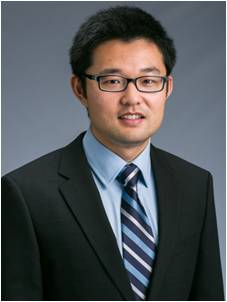Program Information
Principal Component Reconstruction (PCR) for Cine CBCT with Motion Learning From 2D Fluoroscopy
H Gao*, Y Zhang , L Ren , F Yin , Duke University Medical Center, Durham, NC
Presentations
SU-K-FS4-8 (Sunday, July 30, 2017) 4:00 PM - 6:00 PM Room: Four Seasons 4
Purpose: To develop a novel principal component reconstruction (PCR) technique with motion learning from 2D fluoroscopic projections for cine CBCT (i.e., 4D images with high temporal resolution).
Methods: The matrix factorization is utilized as an explicit low-rank regularization of 4D images that are represented as a product of spatial principal components and temporal motion coefficients. The key hypothesis of PCR is that temporal coefficients from 4D images can be reasonably approximated by temporal coefficients learned from 2D fluoroscopic projections. For this purpose, we acquire fluoroscopic projections at fixed gantry angles for a few breathing periods, i.e., fluoroscopy based motion learning, without geometric distortion from gantry rotation. Such training projections can provide an effective characterization of the breathing motion.
Results: The implementation is fully parallelized on GPU with NVIDIA CUDA toolbox and each reconstruction takes about a few minutes. The proposed PCR method is validated and compared with PICCS (a state-of-art method) using both simulation and experimental data. The results verified the feasibility of PCR and suggested the reconstruction superiority of PCR in comparison with PICCS.
Conclusion: With a priori estimated temporal motion coefficients using fluoroscopic projections, the PCR method can reconstruct spatial principal components and may potentially render the use of cine CBCT.
Contact Email:
